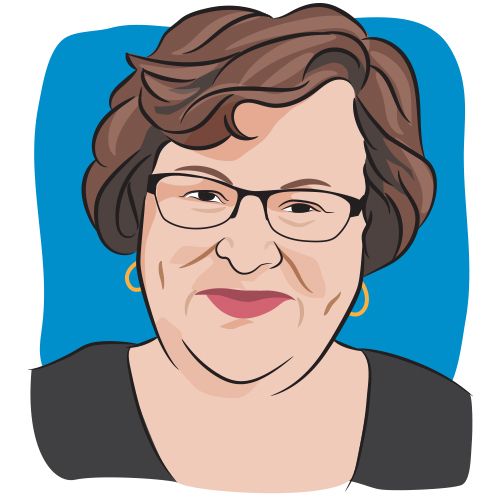Article
The Genetic Mutation in Breast Cancer Most People Don't Know About - But Should
Author(s):
Northwestern Medicine shares how one mother learned of her breast cancer diagnosis and PALB2 genetic mutation.
Kristina Hughes was weaning her 14-month-old son from breastfeeding when she felt a lump. As a 27-year-old nurse practitioner with no family history of breast cancer, Hughes wasn’t overly concerned. But tests confirmed, she had stage 2 breast cancer and an inherited genetic mutation in a tumor suppressor gene called PALB2 — which stands for partner and localizer of BRCA2.
“Most people have never heard of it,” says Hughes. “It’s not as widely familiar as BRCA1 and BRCA2, which are known to increase the risk of breast and ovarian cancers. But more people are being diagnosed with it.”
“The PALB2 gene codes for proteins known to interact with BRCA1 and BRCA2 proteins. Together, they aid in DNA recombination and damage repair. When working properly, these proteins help prevent a person from getting certain types of cancers,” explains Mike Suguitan, a genetic counselor at Northwestern Medicine Cancer Center Delnor. “But when we find a PALB2 mutation, we can confirm there’s a hereditary cause or underlying predisposition for breast cancer in the family.”
Breast cancer can happen at varying ages in the same family with the same PALB2 mutation. For female breast cancer, the risk increases with age. Carriers of PALB2 mutations have a 15% risk of developing breast cancer by age 50, and a 35% increased risk by age 70.
“Approximately 5% to 10% of breast cancers are hereditary,” adds Suguitan. “Whether it’s BRCA1, BRCA2, PALB2 or another gene, we tend to find gene mutations in women diagnosed with breast cancer below the age of 50.”
Due to her cancer diagnosis and PALB2 mutation, Hughes’ dream of biologically having three or four children took a different direction. Before starting cancer treatment at Northwestern Medicine Cancer Center Delnor, Hughes underwent in-vitro fertilization (IVF) to save some of her embryos. Unfortunately, they were too immature and unable to survive. Needing to start chemotherapy right away, there wasn’t enough time for another round of IVF. And on top of that, Hughes’ body was about to be put into early menopause.
“Kristina is on adjuvant [Soltamox (tamoxifen)] and a monthly injection drug called Trelstar (triptorelin) which suppresses her ovarian function,” explains Dr. Perry Menini, hematologist and medical oncologist at Northwestern Medicine Cancer Center Delnor. “She also received adjuvant chemotherapy, which temporarily suppresses ovarian function and puts her into a chemotherapy-induced menopausal state. Based on a clinical trial, the risk of her cancer returning is significantly less if we combine ovarian suppression and an antiestrogen hormonal therapy compared to antiestrogen hormonal therapy alone.”
Attempting to conceive a baby would require Hughes to be off the medication for six months prior to conception and then throughout her entire pregnancy, putting her at an increased risk of metastatic recurrence of breast cancer. If Hughes is able to have children in the future, there are options to conceive a child without passing on the PALB2 mutation through pre-implantation genetic diagnosis (PGD).
“PGD is a procedure that combines IVF with genetic testing,” says Suguitan. “IVF is used to help create embryos, then PGD is performed by testing one cell from each embryo for the mutation carried by the parent. Only embryos that are negative for the mutation would be implanted back in the mother. This procedure significantly reduces the chance of a parent passing on a mutation to their children.”
After researching their fertility options, Hughes and her husband, Marcus, decided to grow their family in a way that will keep her safe and healthy. Towards the end of Hughes’ cancer treatment, which included chemotherapy, a bilateral mastectomy with reconstruction, and radiation, the couple learned they were accepted by an adoption agency. Their hope is to adopt a child within the next two years.
“Because of cancer, I had to grieve the idea of not having any more children; but adoption has given us a chance for a new life,” says Hughes. “I want people to know that cancer doesn’t discriminate. It doesn’t care if you’re 27-years-old, breastfeeding your child, and caring for others in your career. It can happen out of nowhere and it’s important to listen to your body — even if you don’t think it could be serious. Cancer affects everyone differently, but I hope my story inspires people to look for a positive light in a dark situation.”
Carriers of PALB2 mutations can be passed down to both women and men. Ideal candidates for PALB2 genetic testing are those with breast, ovarian, pancreatic or prostate cancers. Pre-test and post-test genetic counseling is also recommended for anyone interested in testing.
“Genetic testing is complex and rapidly growing,” says Suguitan. “Some genes we know more about than others. Some results may give us answers, but many results give us more questions. Genetic testing is a personal choice, but it should include a conversation before and after testing.”
Talk to your doctor to see if you’re a good candidate for genetic testing, and for more information, visit nm.org.



